Owlkids Books has been publishing children’s magazines and a complete line of children’s books for 40 years now, and we’ve partnered with our friends at Owlkids to share some of their top new releases for 2020. Take a look at some of this year’s most engaging children’s books for kids aged 5-13, then scroll all the way down to enter to win this same collection of books for your own kiddos!
Click on the titles or cover pictures to see these books on Amazon.
Picture Books
First I want to share a few of this year’s best picture books with beautiful and engaging illustrations that draw young readers into the story. In these books, the pictures are as much a part of the story as the text.
Elin Kelsey & Soyeon Kim
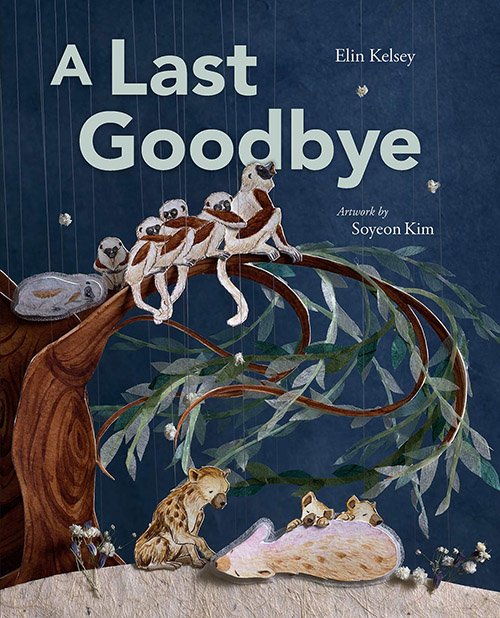 This latest work from the talented duo of author Elin Kelsey and artist Soyeon Kim takes on the serious theme of death and mourning with gentle warmth and compassion. Using photographs of watercolour cut-out animals layered in 3D dioramas, Kelsey explains some of the real-life ways that social animals care for each other and cope with grief and loss.
This latest work from the talented duo of author Elin Kelsey and artist Soyeon Kim takes on the serious theme of death and mourning with gentle warmth and compassion. Using photographs of watercolour cut-out animals layered in 3D dioramas, Kelsey explains some of the real-life ways that social animals care for each other and cope with grief and loss.
Orcas carry their family members to the surface of the ocean when they are too weak to swim themselves. Chimpanzees hug and hold hands with sick members of their troop. Elephants cover their dead with greenery and gather to mourn together. This beautiful book speaks to the power of memory, family, and the ability of new life to arise from the remains of the old. A wonderful way to start a conversation about death and dying.
The interior of the book jacket has a bonus surprise: photos showing how Soyeon Kim designed and created the beautiful images in this must-have book. (Ages 5-12)
Caroline Adderson & Alice Carter
“Paul and Pierre are great explorers. Ils sont aussi des amis. Friends and explorers.”
Anglophone Paul and Francophone Pierre are the best of friends. While exploring a snowy mountainside, the hungry boys decide to take a break and make a sandwich. But what should they put in it? The boys start out with lettuce and cucumbers and cheese, but soon they start adding some more unique ingredients in their quest for the tallest, most amazing sandwich ever.
These two friends speak different languages but still understand one another. Unlike a typical bilingual story where each line is written in both English and French, this story is told in alternating sentences in each language which requires a bit more of a thoughtful reading. Despite this, the story is easily understood using context clues, and the colourful pictures also help the reader decode what’s happening. (Ages 6-9)
Etta Kaner & Ashley Barron
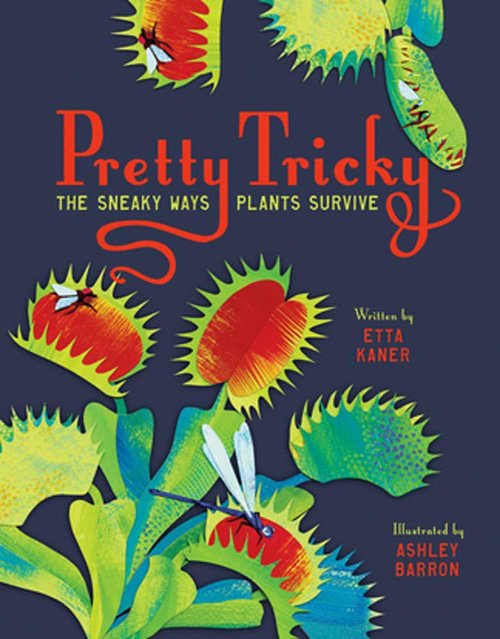 Plants have a few basic tasks – to defend themselves from predators, to reproduce, and to feed – and sometimes they need to be tricky to compete and survive. The first chapter of this gorgeously illustrated book explores some of the most interesting ways that plants have evolved to protect themselves from predation. The Boquila vine’s leaves change to match its host plant to help it blend in and avoid being eaten. Acacia trees provide a home to ants which live inside their hollow thorns and in return fight off other insects and chew off climbing vines that could damage the tree.
Plants have a few basic tasks – to defend themselves from predators, to reproduce, and to feed – and sometimes they need to be tricky to compete and survive. The first chapter of this gorgeously illustrated book explores some of the most interesting ways that plants have evolved to protect themselves from predation. The Boquila vine’s leaves change to match its host plant to help it blend in and avoid being eaten. Acacia trees provide a home to ants which live inside their hollow thorns and in return fight off other insects and chew off climbing vines that could damage the tree.
Plants have evolved some really creative methods of finding food that enable them to survive, even in harsh environments. The Western Australian Christmas tree grows long roots that seek out another plant’s roots, cut into the root, and enter the cut to siphon away its water and nutrients. And when it comes to reproduction, plants have developed all sorts of ways to attract pollinators and ensure their seeds are spread. Bright flowers and tasty fruit attract insects and birds who help spread pollen and seeds. The giant water lily attracts scarab beetles with sweet perfume and nectar and traps them inside its flower before releasing them the next day covered in pollen to pass along to the next water lily.
Quick reference text bubbles let young readers know where each plant grows, and striking, brightly-coloured collage illustrations draw kids in and encourage them to learn more about different strategies plants use to survive and thrive. A fascinating introduction to plant adaptations and botany. (Ages 6-9)
Graphic Novels
Graphic, comic-style books are a great way to encourage reluctant readers and foster a love of reading. These are some of the graphic novels we’re reading together this fall.
Cathon
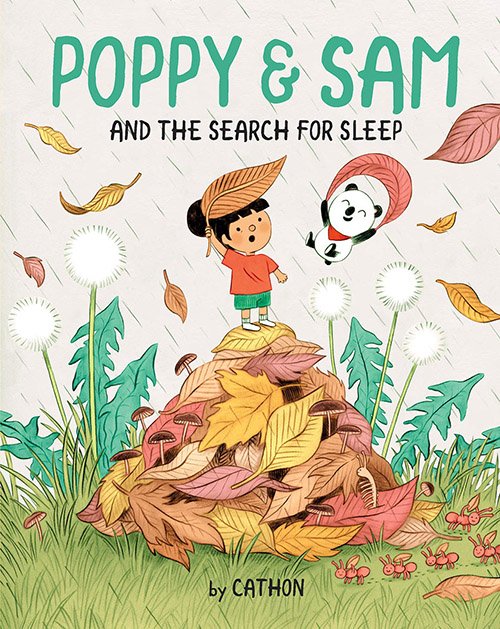 Best friends Poppy and Sam are back in a new graphic/picture book. This time it’s fall, and Sam the panda is ready to hibernate for winter. Poppy decides to hibernate as well, but when she can’t fall asleep, she and Sam decide to seek advice from their friends.
Best friends Poppy and Sam are back in a new graphic/picture book. This time it’s fall, and Sam the panda is ready to hibernate for winter. Poppy decides to hibernate as well, but when she can’t fall asleep, she and Sam decide to seek advice from their friends.
The two friends visit the bees, frogs, and ants to find out how they hibernate, but nothing seems to help Poppy fall asleep. Then the pair drop in on the mouse family and discover that mice do not hibernate. The mice have lots of fun planned for the winter and invite Poppy and Sam to join them. But before you know it, Poppy and Sam are fast asleep. (Ages 5-9)
Sandra Dumais
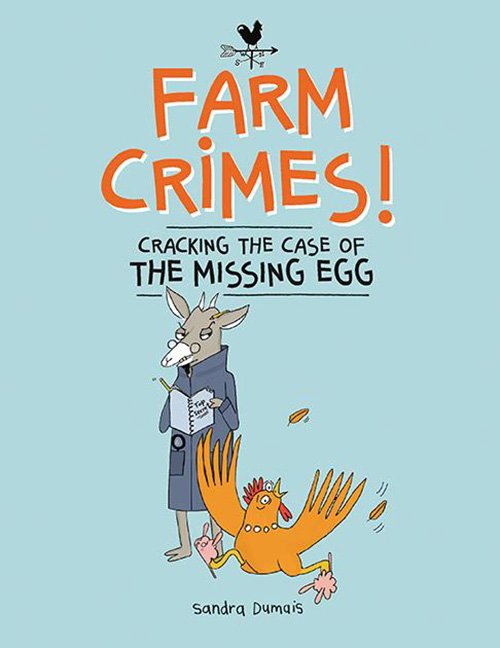 Oh no, Hen’s egg has gone missing! Or has it? The animals call for Inspector Billiam Van Hoof – the world’s best (and only) goat detective – to “crack” the case.
Oh no, Hen’s egg has gone missing! Or has it? The animals call for Inspector Billiam Van Hoof – the world’s best (and only) goat detective – to “crack” the case.
In this amusing early graphic story, all the farm animals take on human dress and characteristics like knitting, guitar-strumming, and pink-bunny-slipper-wearing. Each page has lots of fun details, and there’s a map of the farm on the inside. Collect the clues and “crack” the case of the missing egg. Will the Inspector come to the correct conclusion? (Ages 5-10)
Cary Fagan & Enzo Lord Mariano
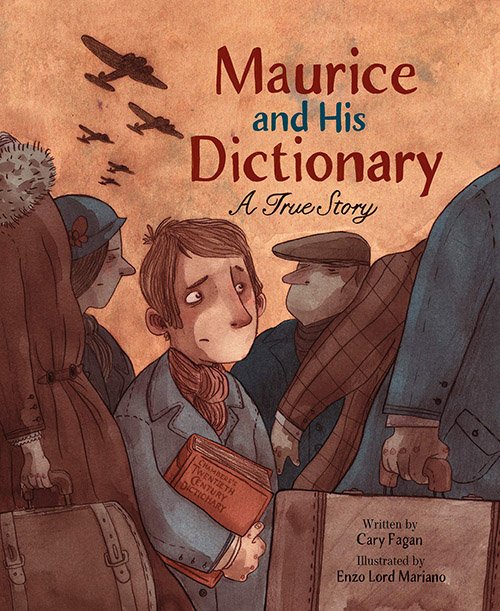 Maurice is a young Jewish boy living in Brussels, Belgium in May of 1940 when the Nazi army invades the country. His family is forced to flee to France, Portugal, and then finally across the Atlantic Ocean to Jamaica to avoid the Nazis. In Jamaica, Maurice and his family are sent to live in an internment camp for two years. Throughout their long search for safety, whenever Maurice sees the injustice of people being harassed and detained and arrested because of their ethnicity or beliefs, he tells himself, “The law will make us all equal.”
Maurice is a young Jewish boy living in Brussels, Belgium in May of 1940 when the Nazi army invades the country. His family is forced to flee to France, Portugal, and then finally across the Atlantic Ocean to Jamaica to avoid the Nazis. In Jamaica, Maurice and his family are sent to live in an internment camp for two years. Throughout their long search for safety, whenever Maurice sees the injustice of people being harassed and detained and arrested because of their ethnicity or beliefs, he tells himself, “The law will make us all equal.”
Maurice dreams of becoming a lawyer, but hasn’t been able to attend school regularly. This driven boy seeks out other displaced people living in the internment camp – a former teacher, a university professor, a banker, a bookshop owner – willing to tutor him. Maurice buys a dictionary and reads the whole thing to improve his English. After years of hard work, Maurice graduates high school and is sent to Canada to study law at the University of Toronto.
The sepia-toned panels evoke a historic feel like old photographs and convey the seriousness of the subject. Back matter includes photos of the real Maurice (the author’s father), the passenger manifest of the ship that brought the family to Jamaica, and a photo of the original dictionary that Maurice bought to study as a teenager. (Ages 8-13)
Middle Grade Stories
Now that my kids are in grades 3 and 5, they’re into these novels for older, confident readers.
Craig Battle
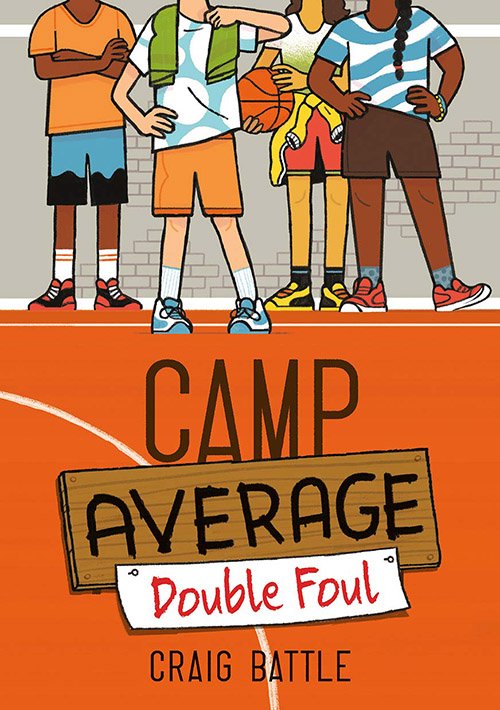 This is the second book in the Camp Average series. Mack and his friends have returned to Camp Avalon sports camp, affectionately dubbed Camp Average, which has now gone co-ed. Camp Director Winston is up to his old hypercompetitive ways, and his latest strategy is to pit the boys against the girls in a high-stakes basketball tournament. Mack decides to fight back with a plan to sabotage the players’ performances. But when his teammates figure out his role in the chaos, Mack has to make things right.
This is the second book in the Camp Average series. Mack and his friends have returned to Camp Avalon sports camp, affectionately dubbed Camp Average, which has now gone co-ed. Camp Director Winston is up to his old hypercompetitive ways, and his latest strategy is to pit the boys against the girls in a high-stakes basketball tournament. Mack decides to fight back with a plan to sabotage the players’ performances. But when his teammates figure out his role in the chaos, Mack has to make things right.
Pulling together, the teammates come up with a strategy that lets them play without letting Winston win. Friendships are made, teamwork is learned, and the kids discover that sometimes winning doesn’t mean coming in first. (Ages 8-13)
Rona Arato
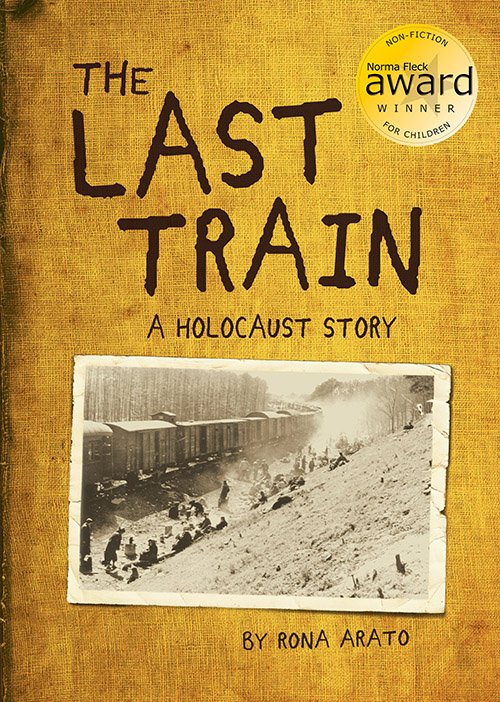 Now in paperback and timed to coincide with the 75th anniversary of the end of World War II, The Last Train documents one family’s experiences and survival through the horrors of the Holocaust. This is the true story of 6-year-old Paul, his 10-year-old brother, and their mother’s captivity in the Bergen Belsen Concentration Camp and the events that led to their rescue from a death train by the American Ninth Army in April 1945.
Now in paperback and timed to coincide with the 75th anniversary of the end of World War II, The Last Train documents one family’s experiences and survival through the horrors of the Holocaust. This is the true story of 6-year-old Paul, his 10-year-old brother, and their mother’s captivity in the Bergen Belsen Concentration Camp and the events that led to their rescue from a death train by the American Ninth Army in April 1945.
Written by Paul’s wife and reconstructed from her husband’s childhood memories, written records, and memoirs of other survivors, this moving story teaches us about hope and love and endurance in the midst of one of the most horrifying genocides of the 20th century. The final chapters describe Paul’s reunion with his rescuers in 2009. Includes photos of the family, the train, Bergen Belsen, and Paul’s reunion with some of the men who liberated the train. (Ages 10-14)
Middle Grade Non-Fiction
Lots of us will be teaching the kids at home at least part of the time this year, and having a selection of relevant and engaging non-fiction books to spark interest and discussion will make a difference.
Heather Camlot & Serge Bloch
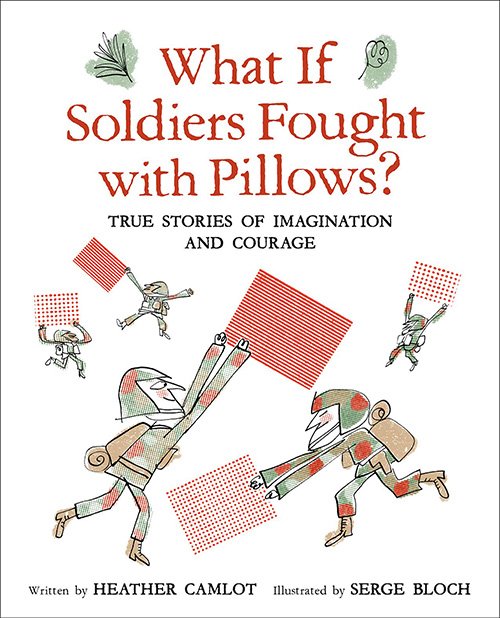 Inspired by thoughtful what-if statements, this fascinating book introduces kids to fifteen individuals and organizations striving to make a difference in the world. What if soldiers fought with pillows instead of pistols? Read about Desmond Doss, a conscientious observer in World War II who refused to carry a gun but served as a medic instead, saving 75 of his fellow soldiers at Hacksaw Ridge.
Inspired by thoughtful what-if statements, this fascinating book introduces kids to fifteen individuals and organizations striving to make a difference in the world. What if soldiers fought with pillows instead of pistols? Read about Desmond Doss, a conscientious observer in World War II who refused to carry a gun but served as a medic instead, saving 75 of his fellow soldiers at Hacksaw Ridge.
Or what if Navy SEALS balanced balls on their noses or played horns? Clowns Without Borders is an international organization that sends circus and street performers, magicians, musicians, and clowns to entertain hundreds of thousands of children in crisis areas around the world.
This innovative book encourages children to think of new possibilities, new ways of doing things, and imagine how they might change the world. (Ages 8-12)
Kira Vermond & Clayton Hanmer
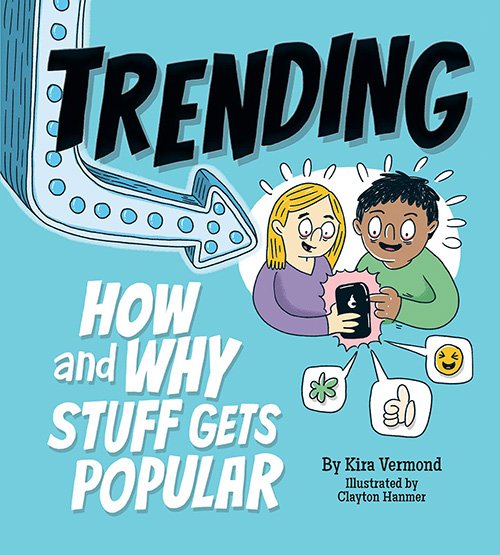 Trending is a fascinating dive into what drives fads and trends. The short, readable comic-style book presents real world examples of fads like Pokemon Go, Hula-Hoops, fondue, Cabbage Patch dolls, and even wristwatches, then introduces some of the psychological and economic principles underlying the life cycle of a fad, supply and demand, mere exposure effect, social currency, and predictive marketing.
Trending is a fascinating dive into what drives fads and trends. The short, readable comic-style book presents real world examples of fads like Pokemon Go, Hula-Hoops, fondue, Cabbage Patch dolls, and even wristwatches, then introduces some of the psychological and economic principles underlying the life cycle of a fad, supply and demand, mere exposure effect, social currency, and predictive marketing.
It’s not all fun and games (and fondue) though. “Bad fads” – things like goldfish-swallowing, a market glut of quinoa that ruined farmers in the Andes, and malicious propaganda – are all examples of the darker side of popularity.
This is a great way to start critical discussions to help “trend-proof” your kids, educate them to think critically about the ways that marketers are trying to catch their attention and dollars, and help them understand what makes ideas good or bad. The book closes with some ideas for using fads, social media, and trends to do good (think fundraising challenges). (Ages 9-14)
Edward Keenan & Julie McLaughlin
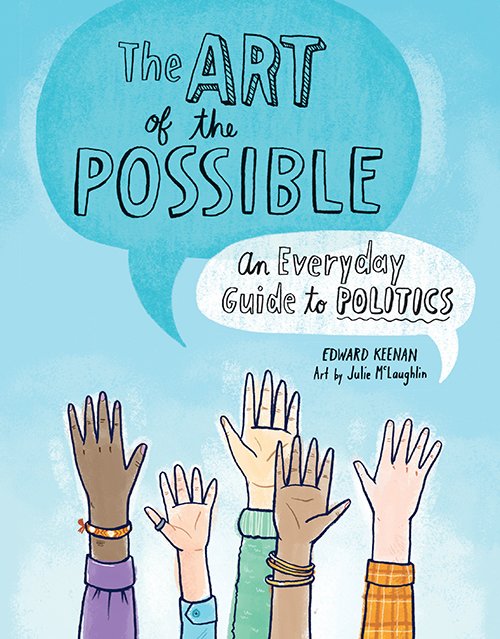 Now available in paperback, The Art of the Possible makes the case that we are all politicians. Politics is how we decide to do things together as a group, how we get along, and how we convince others to see our point of view.
Now available in paperback, The Art of the Possible makes the case that we are all politicians. Politics is how we decide to do things together as a group, how we get along, and how we convince others to see our point of view.
Learn about the purpose and functions of politics, political parties, and levels of government. Understand different political systems, political ideologies, and strategies for communicating and convincing others of your view point. The author attempts to use a few examples from around the world but focuses mainly on American political figures and a few from Canada. First published in 2015, this book is certainly relevant to the current world situation in its discussion of conflict and polarization. A glossary at the end helps with new vocabulary. (Ages 10-14)
Win a Mini Library from Owlkids Books
I’ve got a set of all eleven books reviewed here to give away to one lucky family! Enter in the giveaway widget below. This giveaway is open to residents of Canada and the US, 18+. All the winner’s entries will be verified.
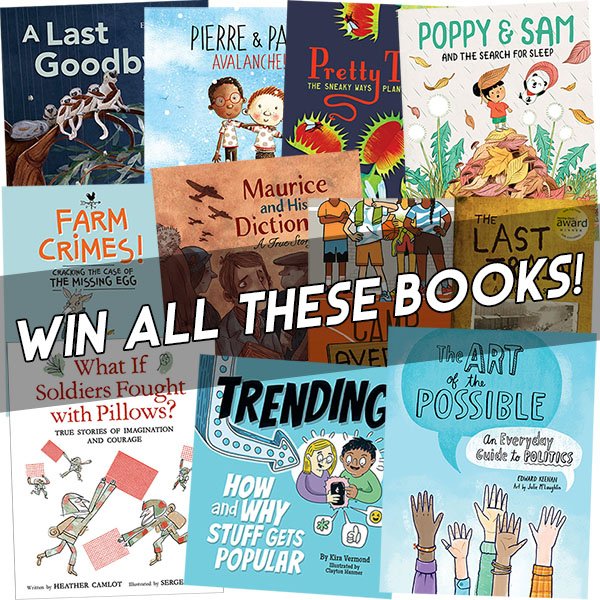
Click here to check out my other open giveaways and be sure to follow me on Facebook!
Disclosure: I received sample items to facilitate this post. All opinions expressed are completely honest and my own, based on my personal experience. Your experience may differ. This post contains affiliate links. As an Amazon Associate I earn from qualifying purchases, at no additional cost to you.
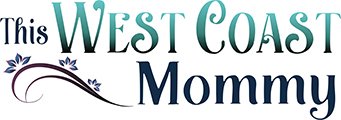

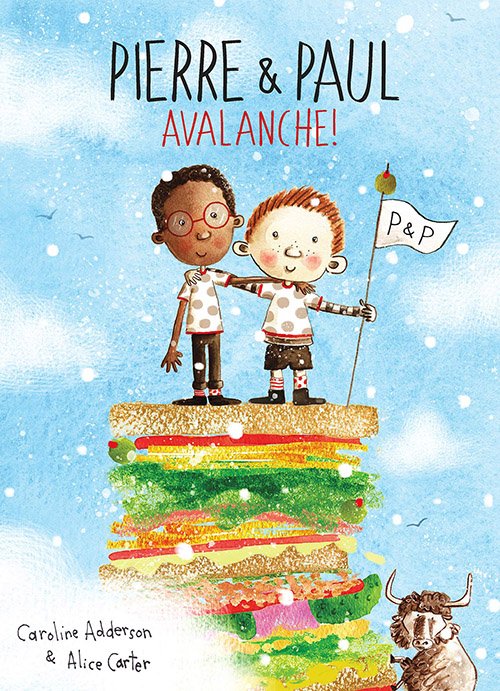

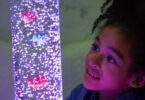
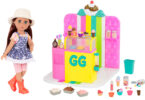
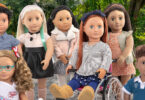

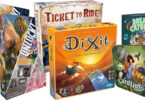
I would most like The Last Train: A Holocaust Story. Something that resonates with my family.
I would give The Last Train. Not enough teaching about this part of history
Farm Crimes: Cracking the Case of the Missing Egg to my granddaughter first, it’s one I’m sure she would enjoy
I would like to read Farm Crimes with Dallas.
Id Love to read Pierre and Paul because my kids love learning, reading and listening in French. (we love the Hockey Sweater)
My grandson would really enjoy Trending: How and Why Stuff Gets Popular and Camp Average: Double Foul.
My son would love reading Farm crimes!
I would share the book The Last Train with my son, we visited Auschwitz 2 years ago and it hit him really hard.
Looking forward to Farm Crimes
My grandkids would be interested in Pretty Tricky and A Last Goodbye.
I think I would get A Last Goodbye we have had a few deaths in the family and this might help with the younger children.
The Last Train
I think she would like Camp Average Double Foul as she likes sports.
I have been getting my great niece books since before she was born. I pick all different kinds of books for her. She is her own person where books are concerned. I have books in a cart for her she will look at them some time pick one some times not. I have saw her look at the same book each time and pass right over it. Then she will pull it out and ask if she can take it home with her. I would like farm crimes & poppy and sam but who knows with her.
I would give the Farm Crimes book to my grandchildren first. They would really enjoy this book.
I would like my children and I to read The Art of the Possible: An Everyday Guide to Politics together.
The last train would be ideal for my daughter because she enjoys documentaries and war time stories. She finds them fascinating. Farm crimes cracking the case of the missing egg would be perfect for my son, he loves funny books, that he can learn to read back to us. It would be one he would enjoy.
I think my boys would love all these books, but especially Farm Crimes: Cracking the Case of the Missing Egg and Camp Average
I am very intrigued with Farm Crimes: Cracking the Case of the Missing Egg
Farm Crimes: Cracking the Case of the Missing Egg sounds like a fun one to read.
The Farm Crimes one, because my daughter likes mysteries!